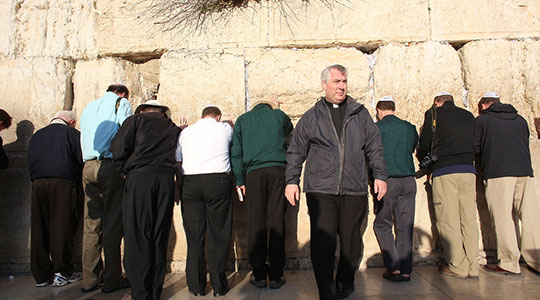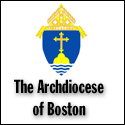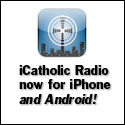Summary of today’s show: On a day with so much tension in the City of Boston and environs, Scot Landry and Fr. Mark O’Connell briefly discussed the state of emergency surrounding the Marathon bombing suspects on the loose, but then decided to offer listeners a respite from the news by returning to the Holy Land to discuss their incredible experiences in the Church of the Holy Sepulchre, on the Mount of Olives, at the Western Wall, along the Via Dolorosa and in the Upper Room, but above all Fr. Mark riding a camel.
Listen to the show:
Podcast: Play in new window | Download
Watch the show via live video streaming or a recording later: BostonCatholicLive.com
Today’s host(s): Scot Landry and Fr. Mark O’Connell
Today’s guest(s): Fr. Paul Soper
Links from today’s show:
- Read the blog posts from the Holy Land at TheGoodCatholicLife.com
- Photos from the Holy Land pilgrimage
- Videos from the Holy Land pilgrimage
Today’s topics: Fr. Mark’s reflections on the Holy Land
1st segment: Scot Landry welcomed everyone on a day that no one in the Boston area will ever forget. He said tonight’s events for the Eucharist Congress due to take place in the North End tonight have been cancelled. More information about Saturday’s event will be posted at their website at http://www.one4boston.org
Scot said he learned about the events overnight in Cambridge and Watertown when woke up this morning. The area in Watertown of the shooting was along Scot’s regular commuter route when the chancery was located in Brighton a few years ago. Fr. Mark O’Connell said he was scheduled for the TV Mass at CatholicTV, but they’re in Watertown which is in lockdown and so they had to replay a previous Mass.
Scot welcomed Fr. Paul Soper to the show. He said he hopes we never have another day like this. Fr. Paul said it’s been a horrible day for the people most closely affected, including the family of the MIT police officer who was killed. Fr. Paul said he had some visitors up from Baltimore today to talk about pastoral planning, but apart from that he’s had a hard time doing any work today.
Scot said he had to decided whether to go into work or stay at home in Belmont which is under lockdown so he sent his family to spend the day with his parents in Lowell while he came in. He said he’s had tremendous respect today for the people in media who have to report live on air all day long, but he too has had a hard time concentrating probably like people all over the area.
Fr. Mark said the two men were so young and led such a normal life and this young man on the run is kind of of every man and that’s creepy. Scot said he’s heard four or five of his friends interviewed who were very surprised by all of this. Several said their first thought on seeing the photos of the FBI not that it could be him but that he should be worried about mistaken identity because it just seemed so impossible.
And seeing heavily armed police walking through your neighborhood for the people in Cambridge and Watertown must be worrisome for the people huddled in their houses.
Fr. Paul said in Boston we’re accustomed to getting storms so bad that we shut down the roads or we’re asked to stay indoors, but even on 9/11 we did not shut down this much.
Scot said if people are listening to us today, they’re not looking for live news updates, so we’re going to return to the Holy Land to talk once again with Fr. Mark and Fr. Paul about their experiences on pilgrimage there last week.
2nd segment: Scot told Fr. Mark that we got a lot of emails when he joined us from Jerusalem last week, but said he had so many more experiences after. He asked what else he did. Fr. Mark said he’s seen a lot of pictures of Jerusalem in his life, but he’d had not concept of Jerusalem before he went. It’s hard to take a picture of Jerusalem that does it justice. It’s a large bowl-shaped valley. There are two ridges that come together, and on one is the Temple and the other is the Mount of Olives. In between is the Pool of Siloam, which is where Jesus cured the blind man. It’s the reason for the placement of Jerusalem, because it makes Jerusalem a fertile place. It’s in the bottom of the valley and is next to Gehenna way down the bottom and is where Jesus’ body would have been thrown to the jackals if Joseph of Arimathea had no asked for his body.
When the Bible says Jesus went down through the Kidron Valley and entered the gate of the city, that would be way down in the valley. It’s so steep that you have to walk sideways. Then up to the gate is the cemetery where people want to be buried, an ancient cemetery that dates back to before Jesus, through the Golden Gate or Messiah Gate, which is now blocked up. That’s the one Jesus came through on Palm Sunday.
Fr. Paul had thought the Kidron Valley would be a low place that one would have to cross, and was associated with death, but had no idea of the topography. Fr. Mark said it’s not within the walled city, but the distances are very short. All the distances were shorter than expected. The distance between the place of the crucifixion and the tomb was about 30 yards. The Via Dolorosa, the way of the Cross, was about an hour, but because they had to stop. Some scholars say the route that is traditional is wrong because the place where they thought Jesus was crucified was wrong.
However, the location of Golgotha, where Jesus was crucified, is well known and attested. It is inside the Church of the Holy Sepulchre. It is clearly the place where you would put someone so that the whole city could see him. It’s called the place of the skull, because it looked like a skull. On the level of the tomb, which is lower down, there’s a window into the bottom of the rock which shows evidence of an earthquake and St. Matthew recorded an earthquake at the moment of the death of Jesus. St. John said they placed Jesus in Joseph of Arimathea’s tomb because it was close at hand.
Fr. Mark said it’s inspiring because it’s where Jesus was crucified and buried. But it’s also dark and dirty and there’s lot of tensions among the maintainers of the building. Fr. Dan Hennessey and some of the others spent the night in the tomb in a vigil for vocations, but they got kicked out at a point by the Greek Orthodox. Similarly, they celebrated Mass in the tomb and then had to get out. There’s always a tussle over these places among people trying to get in. It’s because there’s tension among the different factions in the city between Catholics, Orthodox, Jews, and Muslims. There’s a standstill and status quo because no one can agree on changing anything. For example, there’s a tomb and an altar in the church that is falling apart, because no one can wants to upset the status quo.
Scot said its sad that Jesus prayed that all would be one, but these sorts of divisions still take place in these holiest places. Fr. Mark said that contrast is very powerful there. The power of placing your hand on the place where the Resurrection occurred and where Jesus’ body was laid is something he’ll never forget.
Fr. Paul said he loves the way all the tensions show that Jesus entirely healed everything in the world. The world was messy before and it’s messy afterward because that’s not what happened to human nature. The brokenness of the Church is reflected in what’s going on in the church at the foot of the Cross. We know on the Day of the Coming of the Lord all that brokenness will be healed.
Scot asked about the Western Wall in Jerusalem and what it meant for them to pray there. Fr. Mark said the Western Wall is the closest the Jews can get to the Temple Mount, which is now the location of an Islamic mosque. Fr. Mark noted that its part of the original wall and is only the top part. The wall reaches down 50 feet below the current level of the ground and would have towered high in the air. The wall would have surrounded the the Temple courtyard. For the Jews, the Temple contained the holy of holies where the presence of God dwelt among the people and so they go to the wall to mourn the lack of the temple. He described the different groups of Jews, some of whom pray quietly and others who do a more energetic movement because it was a Friday at the beginning of the Sabbath. Fr. Mark prayed at this wall but wasn’t particularly moved by it.
Fr. Paul said it was moving for him and he doesn’t know why. He only knows that when he leaned against the wall and prayed, he didn’t want to leave. He entered a place of prayer where there is peace and a sense of rightness. Usually for him prayer is a chore, but on rare occasions he is drawn into it. Three times while they were there he had to go back and touch the wall to pray. Away from the wall, he had set prayers he prayed, but at the wall he didn’t have any words of prayer. Fr. Mark said at the Sea of Galilee on the Mount of the Beatitudes, there is a 2,300-year-old tree and he had a time of prayer there that was very moving because the tree was there at the time of Jesus. Fr. Paul said the Via Dolorosa was also moving but Fr. Mark said it really hit him too. Scot asked whether there was a particular image or station that affected him. Fr. Mark said the Via Dolorosa is a business district and a regular street and the station is a plaque on the wall. So visually, the reflection is that people would have been doing business as Jesus carried his cross. It was the Sabbath so there would have been many sheep heading to the Temple to be slaughtered for the Passover and Jesus would have been ignored by many people. It was a similar atmosphere. Fr. Mark said it’s a fairly flat walk now with stairs, but Jerusalem is built on a mountain so there’s a lot of up and down.
But he said their prayer experience in the Cenacle was the peak experience for their group. In the Upper Room, there was a point where they were signing an Alleluia and there wasn’t a single person who wasn’t belting out the song. How can you not have that in the place of the Last Supper and Pentecost? It was a beautiful experience. Fr. Paul said Cardinal Seán’s talk there was better there than any other homily he’s ever heard from him anywhere else. Scot said this was the end of a retreat experience for Cardinal Seán too and Scot hears his brother Fr. Roger say he loves leading retreats because it’s so uplifting. Fr. Mark said if he gave a homily or talk in that room, he’s sure it would be the best he’s ever given too because the Spirit moves in that room.
But also on that day, the Cardinal started by celebrating Mass literally in the Lord’s tomb, got appointed to a special panel by the Pope, and then had this experience in the Upper Room on the same day. That appointment is a big deal.
Fr. Paul said we can’t leave without asking about Fr. Mark and the camel. Scot said he’s not sure how he would rank Fr. Steven Zukas’ camel experience versus Fr. Mark’s. He said it’s the best $3 he’s ever spent. He was shocked by how the camel got up, with its back feet first so he was looking straight at the ground. Almost every person in the Pastoral Center has asked him about the camel and it’s neat everybody was following this trip.
Fr. Paul thanked Scot for sending George Martell to come along to record the experience in a way that no one else could. Scot said a lot of people have told him that now they can’t wait to go. Fr. Mark said the best way to go is with the Cardinal Archbishop of Boston, the Franciscan papabile.
Now as we do every week at this time, we will consider the Mass readings for this Sunday, specifically the Gospel reading.
- 1st Reading for the Fourth Sunday of Easter, Acts 13:14, 43-52
Paul and Barnabas continued on from Perga
and reached Antioch in Pisidia.
On the sabbath they entered the synagogue and took their seats.
Many Jews and worshipers who were converts to Judaism
followed Paul and Barnabas, who spoke to them
and urged them to remain faithful to the grace of God.On the following sabbath almost the whole city gathered
to hear the word of the Lord.
When the Jews saw the crowds, they were filled with jealousy
and with violent abuse contradicted what Paul said.
Both Paul and Barnabas spoke out boldly and said,
“It was necessary that the word of God be spoken to you first,
but since you reject it
and condemn yourselves as unworthy of eternal life,
we now turn to the Gentiles.
For so the Lord has commanded us,
I have made you a light to the Gentiles,
that you may be an instrument of salvation
to the ends of the earth.â€The Gentiles were delighted when they heard this
and glorified the word of the Lord.
All who were destined for eternal life came to believe,
and the word of the Lord continued to spread
through the whole region.
The Jews, however, incited the women of prominence who were worshipers
and the leading men of the city,
stirred up a persecution against Paul and Barnabas,
and expelled them from their territory.
So they shook the dust from their feet in protest against them,
and went to Iconium.
The disciples were filled with joy and the Holy Spirit.
- Gospel for the Fourth Sunday of Easter, John 10:27-30
Jesus said:
“My sheep hear my voice;
I know them, and they follow me.
I give them eternal life, and they shall never perish.
No one can take them out of my hand.
My Father, who has given them to me, is greater than all,
and no one can take them out of the Father’s hand.
The Father and I are one.â€
Scot said Jesus is telling us a little about the Trinity. He gives a sense of consolation that Jesus is always with us. Fr. Paul said our love relationship with Jesus is as certain as His love relationship with the Father. Every other kind of love we can experience is tenuous in comparison.
In the first reading, the Jewish Christians question whether the Gentiles can be Christ followers. Fr. Mark said the First Council of Jerusalem addressed this very question. He noted that all throughout the hills of Jerusalem are caves where the apostles would have met. At the Sea of Galilee, Jesus gave to Peter His sheep to protect us.








Comments Closed